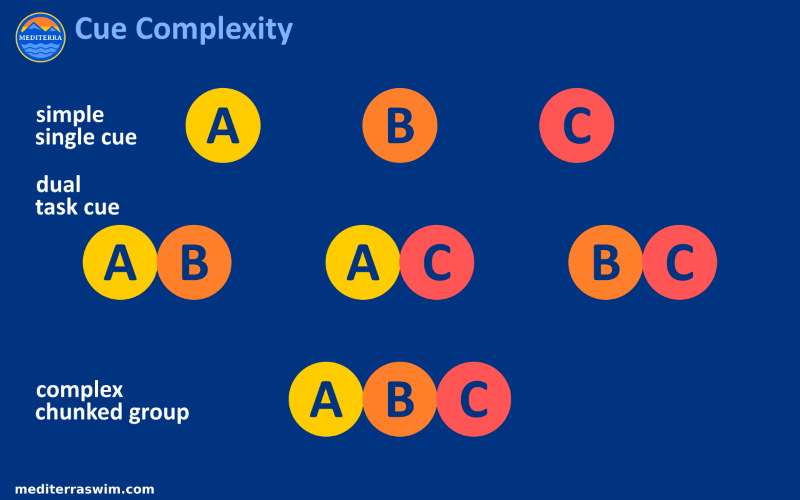Forums › Library › Training FAQ › How To Occupy My Attention?
Please type your comments directly in the reply box - DO NOT copy/paste text from somewhere else into the reply boxes - this will also copy the code behind your copied text and publish that with your reply, making it impossible to read. Our apology for the inconvenience, but we don't see a convenient way of fixing this yet.
Tagged: attention, cues, focal points, mental training, mindfulness, stroke counting
-
AuthorPosts
-
December 8, 2016 at 01:04 #11458
Admin Mediterra
KeymasterWe must realize that a wandering mind is an unhappy mind. If the channels for your conscious attention are left open while swimming, it will be filled with something, and that something is often negative, or distracting to the quality of the swim. There is no ‘turning off the mind’ or ‘don’t think so much’ – it is a physical impossibility – there is only letting the mind drift to what ever random things come and go, when it is not deliberately (with trained mindfulness skill) directed onto a productive task.
We can use the analogy of personal computer. When I open one to three apps at the same time, my computer seems to run ok without an unacceptable slowing of processing speed. But if I open 4 or 5 apps it slows to an unacceptable speed. If I open one more, or open something that demands too much of the processor the whole computer freezes up and it unresponsive. I think just about everyone reading this has experienced that with a computer.
I think just about everyone reading this has experienced it in TI swimming too!
So, let’s use that ‘channel’ analogy to approximate how the attention of the brain works.
When you set the attention of your mind on something it will use up a channel of your brain. We might say humans have a 2 channel brain – a right and a left side of the brain can operate a bit like a dual-processor. When you give full attention to a focal point on something you are new at learning, you may be using up one whole channel. If you try to hold two new focal points at the same time, you may be using up both channels completely and there will not be much left for anything else.
Once a particular cue becomes somewhat familiar to the neuro-muscular system it may not require a full channel of attention to monitor – at this point the swimmer may blend cues to hold attention on two things at once AB – where AB are starting to blend into a single motor command inside the brain – this type of Cue Blending we use in our learning method is what trains the brain to do that.

Meanwhile, there is another channel available. What is that going to be filled with? If you don’t assign something to it, the random stuff in your subconscious will. And that is one of the first useful purposes of counting strokes – fill that other channel so that distractions won’t easily take over.
In my understanding the two halves of the brain generally have different tasks – I think of the right half as good at focusing on quality (like many of our stroke cues) and the left half as good at quantity, with things like counting. When one holds a cue with one half, and counts strokes with the other, then the whole brain is occupied and unified in the task. And in this way (that I cannot fully explain) time seems to disappear.
Stay In This Moment
But don’t cause the brain to freeze up by overloading those channels. It will shut down quality of everything – stroke control and enjoyment.
Filling those two channels with just enough attention tasks but not too much is the personal art of it. As a coach I can watch for signs and estimate when we’re getting close to the limit for a particular swim student but I don’t know precisely. It is better that I train the swimmer how to use the cues and counting to fill those channels and manage their attention channels.
Consider the objective – we are aiming for a swimmer mind that is occupied with executing a positive and productive task, in such a way that this moment is the only moment.
Counting is used to fill one of the channels. It is used in combination with cues to prevent the swimmer from allowing one of his channels to become occupied with swimming ‘in the future’ or swimming ‘in the past’. It is this moment now that you have control over forming the best stroke (or movement) you can, and if you stay committed to this one, you will be in much better position to do it on the next one too. Conversely, stay thinking about how far you’ve got to go, or what you messed up on way back and your stroke right now is not getting your best attention. With the stroke in this moment not improving, you will not be in position to make the next one better either as it might if attention were fully devoted to this moment now.
***
-
AuthorPosts
- You must be logged in to reply to this topic.

